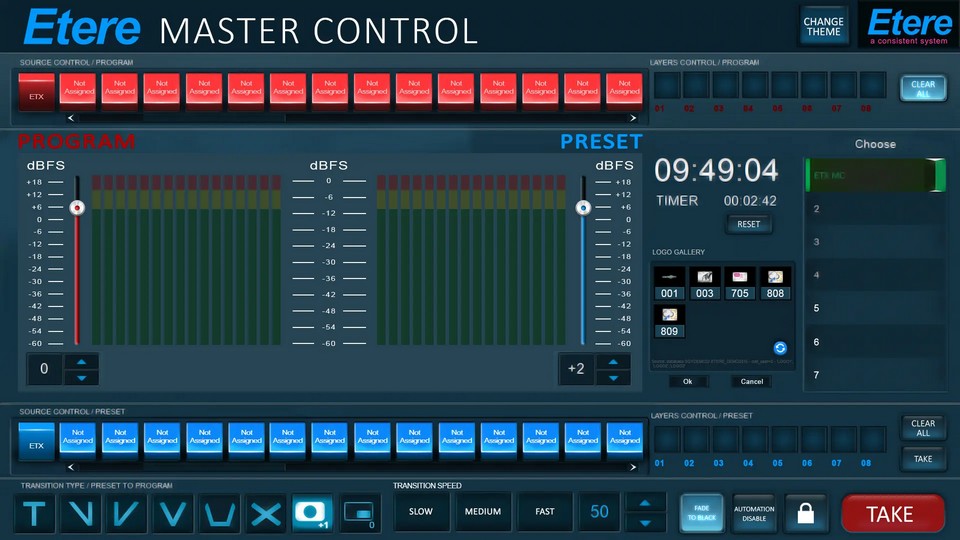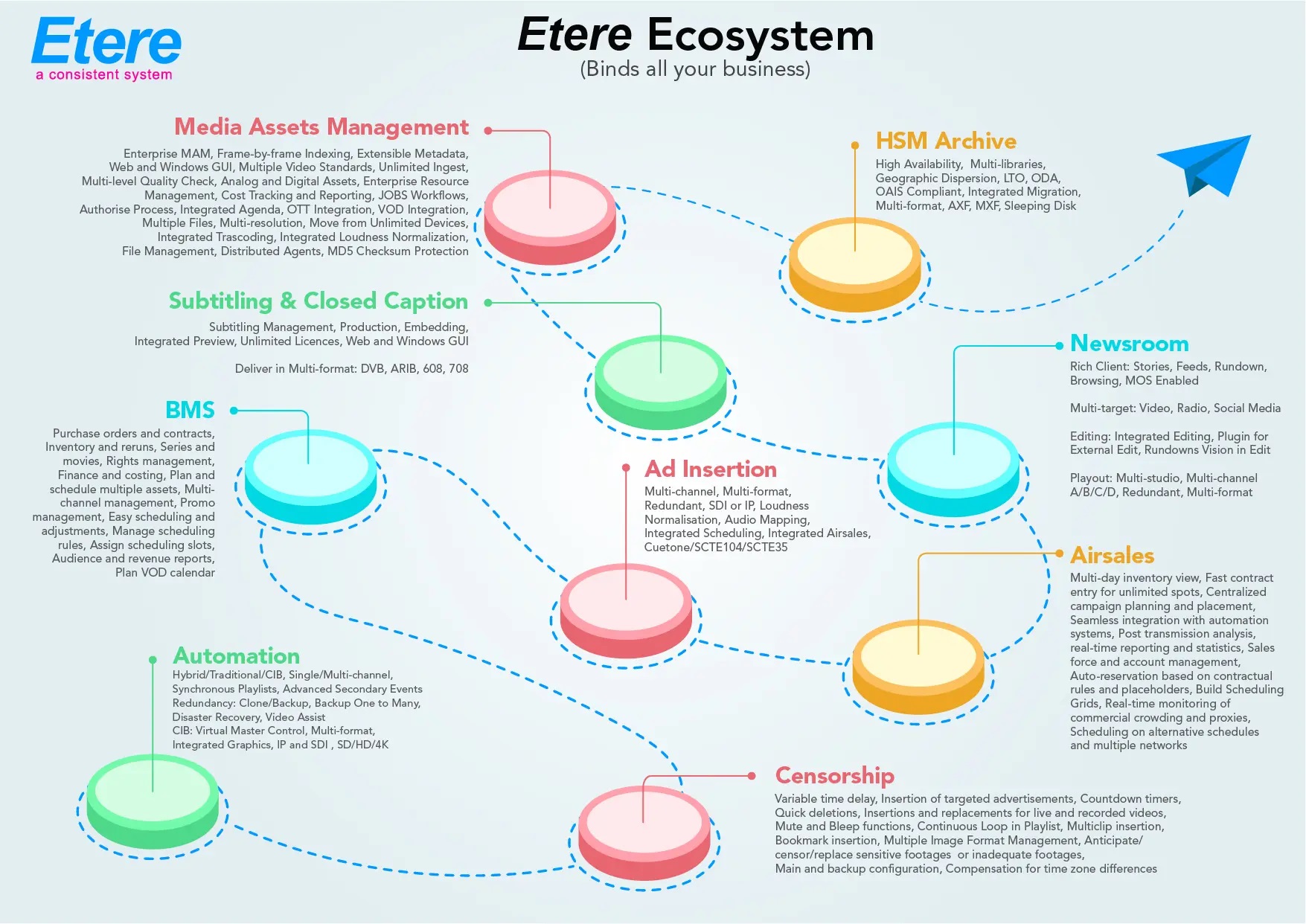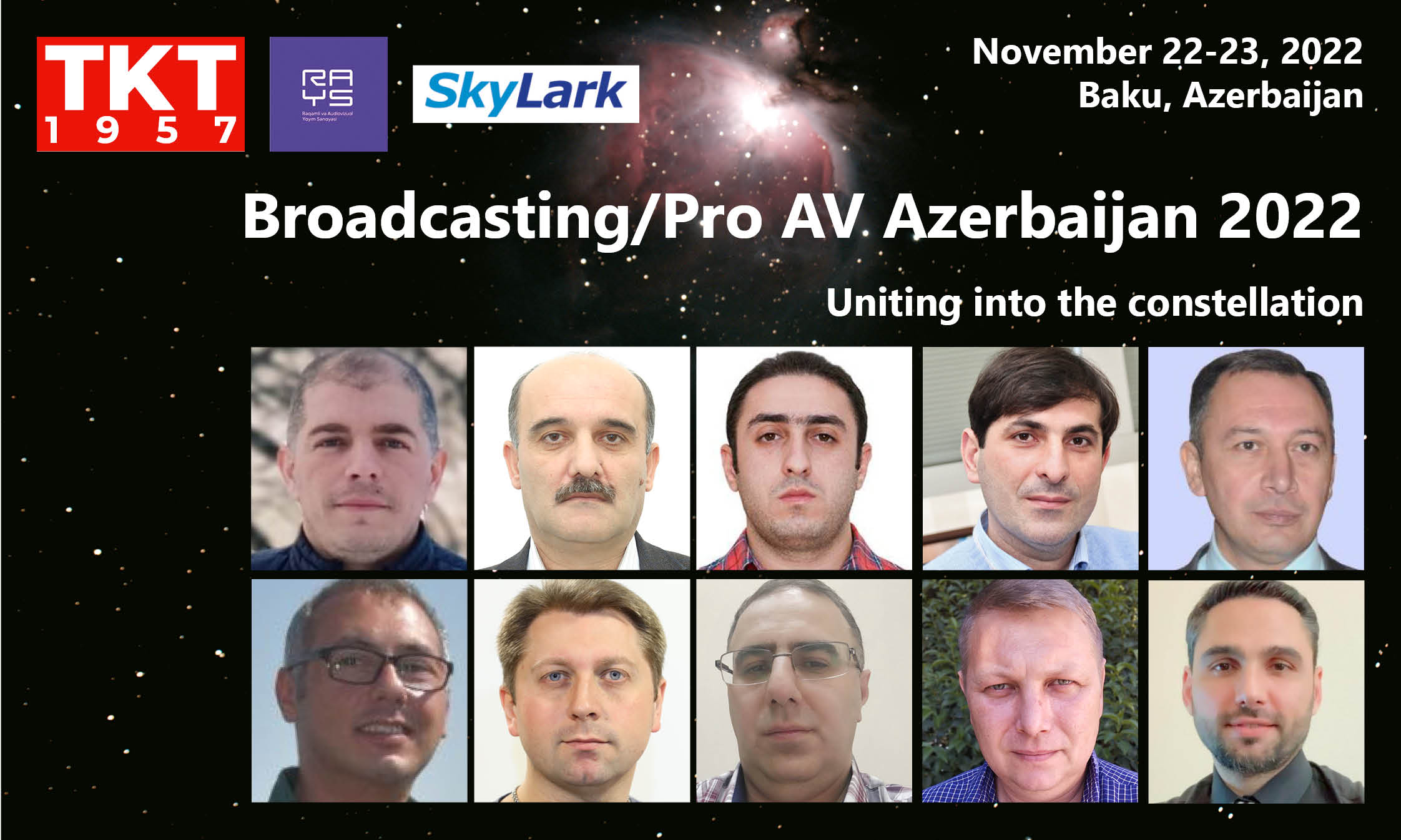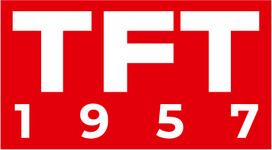Since its beginnings in 1987, Etere has been preparing users for the future. Etere is a worldwide provider of broadcast and media software solutions backed by its mark of excellence in system design, flexibility, and reliability. Etere Ecosystem software solutions manage the end-to-end media workflow and feature an integrative Web and Windows architecture that is customizable to fit perfectly in any system. Etere delivers on its service excellence commitment with 24/7 worldwide support and inclusive software updates. www.etere.com
Broadcast Potential of NDI
The broadcast potential of an IP protocol is essential when considering usage in the Master Control room. One of NDI’s most significant advantages is its ability to run multiple streams simultaneously at no additional costs.
A user can send a large video file to the mixer with low latency while simultaneously streaming it and capturing it on another network. NDI is a bi-directional protocol that supports multiple streams of video simultaneously. It supports all resolutions, frame rates, and video streams.
Additionally, any generation of NDI can work seamlessly with other generations as NDI is backward compatible with the software. Although NDI’s high-powered, flexible stream format makes the stream so well known, it can also be a hindrance in terms of usage in the Master Control room. The NDI stream does not come equipped with a fixed name, thus creating a disparity in its use in the Master Control room.
The master control requires a fixed connection, so the NDI protocol cannot be used without additional help. Each signal must be equipped with a unique identifier in the NDI name. This step is essential when linking the signals correctly; for example, two studio signals can be named “Studio 1” and “Studio 2”. This step is necessary and requires prior planning, especially when the source signals start to number in the hundreds.
The dynamic list of sources must be periodically checked for conflicts for a consistently stable connection. There is also the issue of the burden on the server, as NDI takes up a bandwidth that increases with the size of the audience. For example, an HD stream may consume up to 200MB, increasing to 800MB if four listeners tune in. However, an NDI stream can be kept usable when applied with strategic planning. The bandwidth needs to be used with proper planning to avoid unnecessary streams and to effectively allocate streaming servers to distribute videos to many locations, similar to SDI distributors.
To eliminate the challenge of manual switching in transmission, the integration of Dynamic Host Configuration Protocol (DHCP) enables an automated and dynamic assignment of IP parameters, IP address, network mask, switch address, and name server addressed to each PC/server on the LAN network. In addition, DHCP also automates the assignment of network parameters to the related network devices.
As a result of the integration, the manual tasks of creating and maintaining IP address assignments for each client/server are eliminated. The integration of DHCP in Etere IP transmission provides a centralized, server-based setup that reduces the manual creation and maintenance of IP address assignments for each client/server. The centralized database pools resources for effective optimization and eliminates duplicate resource assignments. Moreover, DHCP allows operators to upgrade the software on client systems automatically.

Ease of Incorporation in Master Control Room
The nature of NDI’s cost-saving and flexible qualities can make the transition from SDI systems to NDI achievable. The move from SDI to a new IP protocol can commonly be seen as a costly change, but with NDI, users can use low-cost converters to port over SDI signals to NDI.
NDI can work in tandem with SDI, so the user can incorporate NDI for an initial network that links to an SDI endpoint and switch entirely to an NDI endpoint when their budget becomes available. However, an issue with NDI would be that the NDI stream requires additional software to utilize it to its full potential. For example, audio and video monitoring need add-on software in the workflow.
With NDI, the signals are not linear, so it can be seen as simple to monitor, but to be truly efficient, the user needs to have intelligent software to avoid unnecessary bandwidth use. Fortunately, NDI’s popularity has continued to extend its support for many software applications in the market today. Requiring additional software programs to use NDI can be an unnecessary expense. Still, the nature of the software usage is kept scalable, meaning that there is no extra cost to expand the NDI-powered systems, unlike with SDI, where the use of hardware increases the expense whenever there are system changes.
NDI’s popularity in the software field has ensured that it has compatible hardwareto optimize the Master Control room usage. NDI connects various video devices, including cameras, converters, video mixers, graphics systems, and many other production devices.
Usage in Master Control Room
For usage in a Master Control room, another essential factor to consider would be its ability to preview streams before the content goes on air. Usually, in an SDI-connected environment, the user can fulfill this with a flip of a switch, but with NDI, a user requires sufficient connection time to do the same. This can be offset by using a system that makes use of a preset/program architecture so that the switch can operate without any glitches. Connecting with all NDI signals is not a correct option; the system can have hundreds of NDI signals, and linking them all could use up all your bandwidth. Thus, an intelligent preset must be used to be sure that the following source is always ready.
Cost-Saving Quality of NDI
With NDI, video feeds can be sent with high quality and low latency at a much lower cost than a conventional SDI setup. In addition, NDI’s ability to link multiple inputs is crucial when operating multiple cameras from the Master Control Room. In contrast, an SDI setup does not allow devices connected to a network to communicate with one another.
Using NDI allows broadcasters to add or manage more content across new media platforms easily. Furthermore, costs are kept while efficiency is maximized by eliminating the need to invest in new high-speed network infrastructure. NDI’s performance over a GigE network makes it possible for broadcasters to tap into their existing infrastructure using SDI equipment. NDI setup provides the broadcaster with stable connectivity for users to transmit high-quality videos across IP networks in real-time with little to no delay. This gives broadcasters maximum flexibility and cost-efficiency when moving from a conventional SDI setup to an NDI workflow.

Case Study: Mondo TV Usage of NDI
One prominent example of live NDI usage would be the Mondo TV systems. A large-scale broadcaster in Belgrade, Serbia, Mondo TV, needed to manage 40 playout channels besides three recording studios and a control room, ingest facility and incoming feeds, and audio dubbing facilities. During the project initialization phase, Mondo TV decided that the Etere NDI system was the ideal fit for their business objectives.
The system can be used without the use of any SDI cables. Etere has outfitted its systems with NDI technology to connect all its software, hardware, and channels together, all without any SDI. Mondo TV is one of the world’s largest solely NDI-powered broadcasting systems. Mondo TV incorporates Etere’s integrated end-to-end management software across their software-defined newsroom, transcoding, playout, monitoring, air sales, and scheduling modules, allowing them to manage their workflows from a centralized database with complete connectivity across the whole facility.
Mondo TV has successfully implemented the world’s first fully NDI-connected system with stable connectivity throughout the facility and minimal hardware requirements. With the flexibility of NDI, Mondo TV can fully adapt its environment into a fully IP master control system with precise timing, seamless routing, and monitoring.
Etere is a participant of the International Exhibition and Conference Broadcasting Cinema Pro AV 2022 Azerbaijan.

Speranza Mitsney, director of business development at Etere, will be available to listen on November 22 online.
Broadcasting Cinema Pro AV 2022 Azerbaijan will be held on November 22-23, 2022 in Baku.
!!! The start time of all events is local – time in Baku UTC +4









